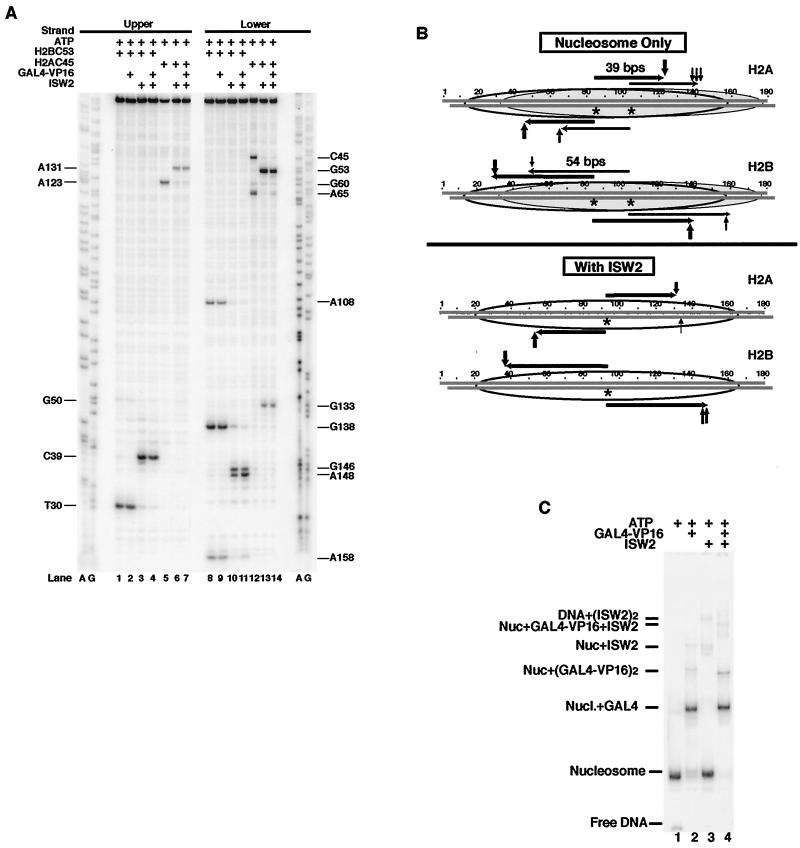FIG. 3.
Mapping the changes in the position of the H2A/H2B histone fold with DNA before and after ISW2 remodeling. (A) DNA mapping results with histone octamers containing mutant H2A Ala 45 or H2B Ser 53 changed to Cys are shown. Samples were prepared and processed as described in the legend to Fig. 2B. The locations of the cut sites are indicated on the left and right sides. The modified histone octamer used in each sample is indicated at the top of the lane. ISW2, Gal4-VP16, and ATP were added as indicated. (B) Summary of the DNA cleavage results with histone octamers modified at residues 45 of H2A and 53 of H2B with correlation to the dyad axis mapping results for histone octamers modified at residue 47 of H4. The vertical arrows above and below the DNA sequence indicate the cut sites obtained with modified H2A or H2B. The horizontal arrows show where the predicted cut sites would be based on the previously determined dyad axis for either the unremodeled or remodeled nucleosome. (C) Gal4-VP16 is bound quantitatively to the183-bp nucleosome before and after remodeling. Small portions of the H2B C53 mapping reactions analyzed in panel A, lanes 1 to 4, were loaded onto a 4% native polyacrylamide gel to assess the extent of Gal4-VP16 and ISW2 binding to the nucleosome. Identical results were obtained with the other two modified nucleosomes (data not shown).

